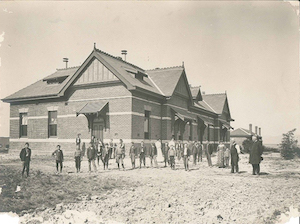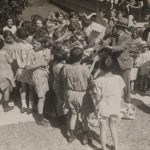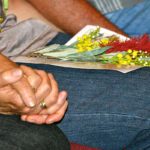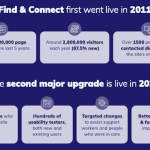Since its inception, the Find and Connect web resource has been a collaboration with people who spent time in care as children. Fundamental to the site is the centring of Care Leaver voices wherever possible in the history and information we provide.
We use information sent to us through the website, long-term collaborators, interviews and photographs of and with Care Leavers to tell the story of life in care that is as close as possible to the lived experience of those who spent their childhood out of home.
Where scant information is available about a home, this can be difficult. However, thanks to the Forgotten Australians, Care Leavers, Wardies and all others who experienced care in Australia prior to 1990 and shared their experience with us, we have developed an understanding of some of the issues that they face. One of those issues is that of identity – from information about family to filling in memories that form a picture of the adult as a whole.
Accessing records is an important way to do this, however there are many barriers to records access that we’ve covered in previous posts.
Our experience with people who were in care has allowed us to prepare professionals who work with and in archives to develop better ways of providing access to this specific group of people. We’ve done this through workshops, through our Records Access Documentation Grants scheme, and through information provided on our blog and on the site.
Based on the knowledge we’ve developed with the input of so many Care Leavers, we were asked to develop a toolkit to assist people who work in archives to provide records in a way that acknowledges what that experience may be like for the person whose childhood may, or may not, be contained within them. This toolkit is for those who work with records that were created about children in out of home care way, to provide a foundation for better access to records and develop safe, empathetic practice.
The toolkit draws heavily on trauma-informed practice, with a focus on the lived experience of people who were in care in accessing their records.
It features people who experienced care in video interviews to ensure that those undertaking the course are fully aware of the experience of records access for Care Leavers, through the Care Leavers’ own voice and experience.
Working in collaboration with Care Leavers to produce this toolkit, and the associated certificate (for those who achieve an 80 per cent pass-mark), will make records access an easier and less traumatic experience for the people who they are most important to.






